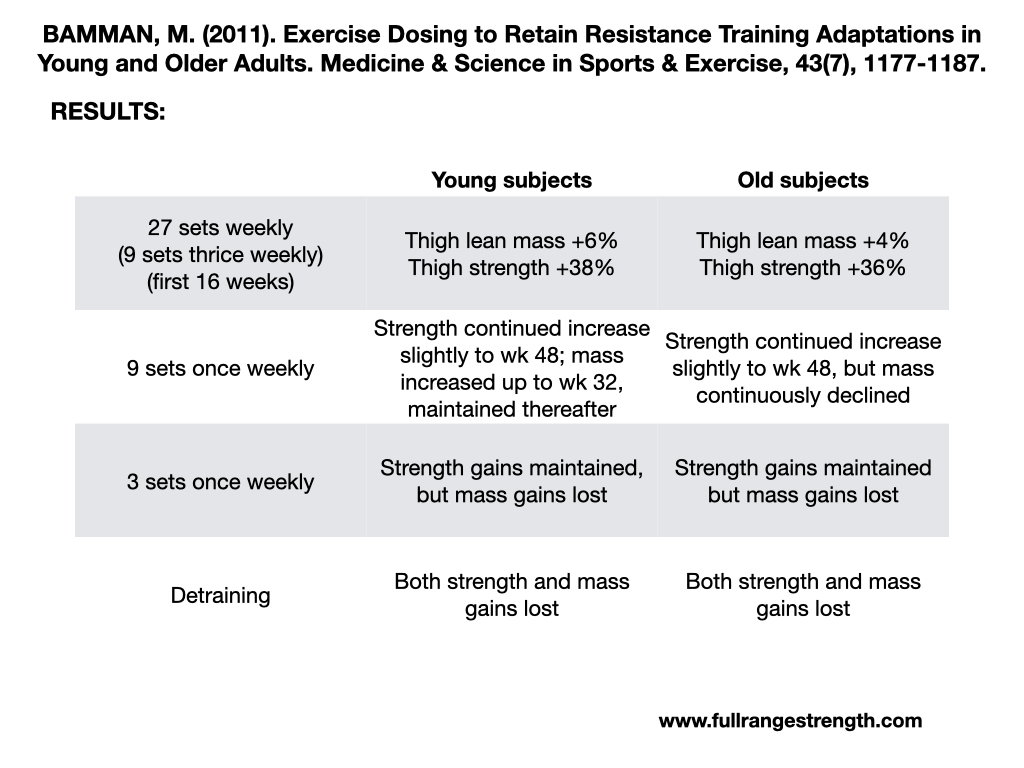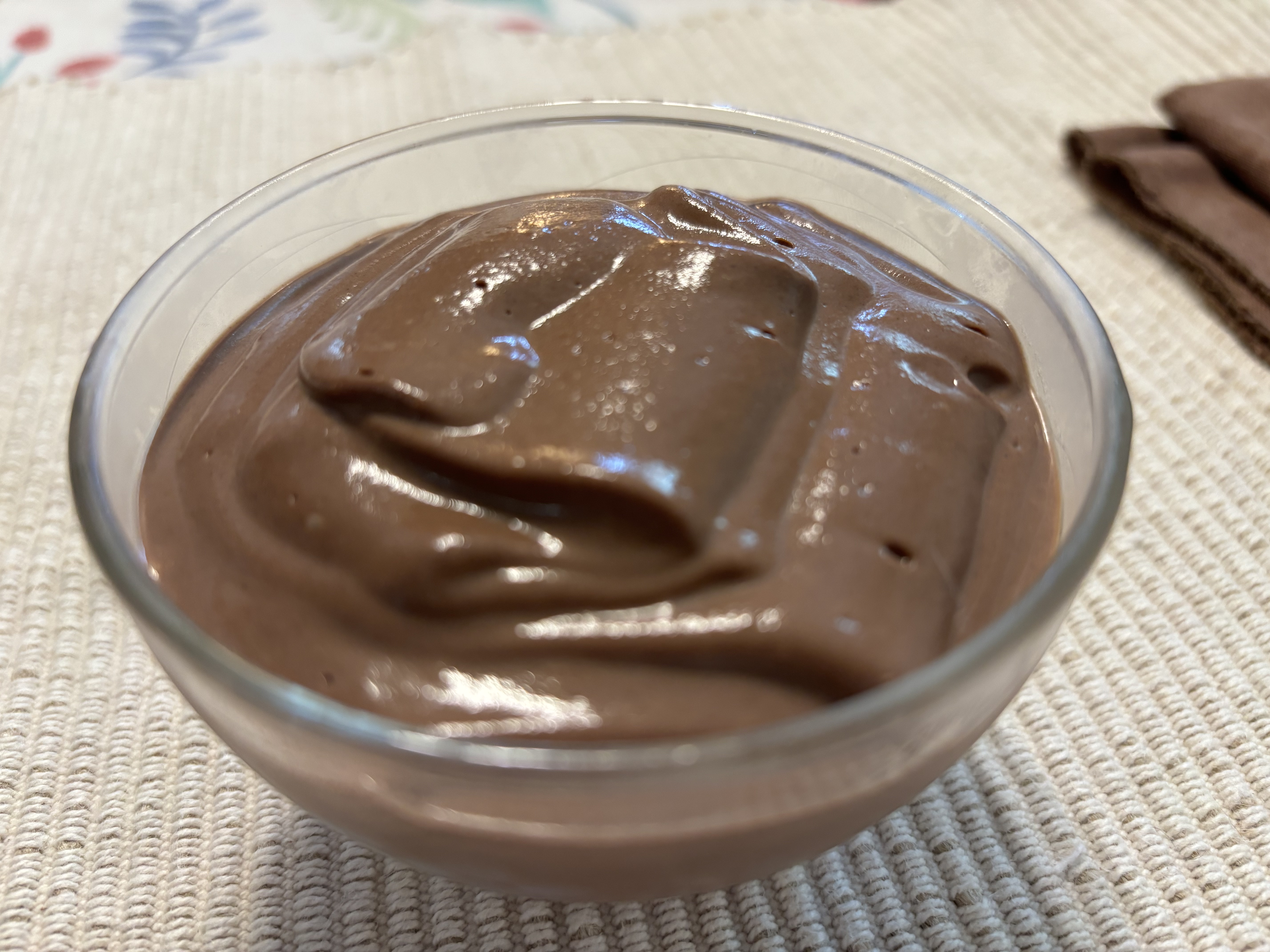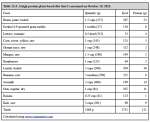Gain Strength Whilst Training Only Three Seconds Daily?
Can you build strength whilst training only three seconds daily? Yes, according to a new study published in the Scandinavian Journal of Medicine and Science in Sports.
However, while this study did confirm that you can gain strength with an extremely small training time investment, it also reported no muscle gains from such limited training.
Training Only Three Seconds Daily Background
In their report on their experimental study of strength training only three seconds daily, Sato and colleagues note that a classic 1953 study by Hettinger and Müller showed that young men could increase isometric maximal voluntary contraction (MVC) strength by about 15% in several weeks by performing a 6-second isometric action at two-thirds of MVC every day.1 In 1958 Rarick and Larsen also reported a 14% increase in isometric MVC strength of the wrist flexors after performing a single 6-second isometric action at two-thirds of MVC daily for 4 weeks.2
These results had not been further investigated since 1958. Since then, investigators have reported that eccentric-only resistance training increases strength and produces hypertrophy to a greater degree than either concentric-only or isometric resistance training.
Sato and colleagues decided to examine the training effects of a single 3-second long MVC per day using either concentric, eccentric, or isometric action.
Their study assigned 49 subjects to four different groups:
- The concentric group performed a single 3-second concentric action with MVC every day.
- The eccentric group performed a single 3-second eccentric action with MVC every day.
- The isometric group performed a single 3-second isometric action with MVC every day.
- The control group did no training.
The subjects in the concentric, eccentric and isometric groups trained 5 days per week for 4 weeks, using only one exercise: arm flexion (aka bicep curls). The total contraction time was only three seconds daily, 15 seconds per week and 60 seconds for the whole month.
This is very brief training, but was for only one muscle group, the arm flexors (biceps and brachialis). More time would be needed to train the entire body, but not much more. If one used compound exercises it would be possible to cover the whole body in just 3-4 exercises each day, which would require only 9-12 seconds. For example, chin ups, dips (or one-arm push ups), and single-leg squats, each performed for one 3-second eccentric. You could alternate the single-leg squats with Nordic curls for the posterior chain from day to day, or add the Nordics to the workout for a total time investment of about 15 seconds exercise. Including generous time for set up we are talking maybe 3-5 minutes of exercise daily.
Although very brief, this was also high frequency training, 5 out of 7 days in the week. The subjects rested only 24 hours between training sessions during the week.
Results of Strength Training Only Three Seconds Daily
First, all participants in the training groups completed all 20 training sessions, training only three seconds daily.
Second, no muscle soreness was detected before each training session in any of the participants, and progress was continuous, indicating that the subjects recovered from each session within 24 hours.
This may call into question the idea that one must allow at least 48 hours between sessions to recover, if you use a low-fatigue method of training. This protocol involved high muscle tension with low muscle fatigue since the maximal muscle tension was maintained for only three seconds daily.
Third, the isometric group produced no change in MVC torque over the 4 weeks, whereas the concentric training produced a 13% increase and eccentric training produced a 16% increase in MVC torque.
Fourth, of the three training groups, only the eccentric method produced increases in concentric (+13%), eccentric (+12%) and isometric (+10%) MVC torque over the four weeks. The concentric method produced improvement only in isometric torque (6%) and the isometric method only produced improvement in eccentric torque (7%).
Fifth, none of the groups training only three seconds daily produced any measurable change in biceps or brachialis muscle thickness.
Lessons From Training Only Three Seconds Daily
First, if you perform strength training with an MVC lasting only three seconds daily, you may not need more than 24 hours rest between bouts. This study focussed on developing maximum muscle tension for only three seconds daily, which means there was very little if any muscle fatigue after a training session. Since fatigue and muscle damage were minimal due to the very low dose/volume, training daily had no deleterious effects.
Second, if you do strength training only three seconds daily per exercise, it is best to perform an eccentric action only, since it will improve concentric, eccentric and isometric strength.
Notably, whereas Hettinger and Müller1 in 1953 and Rarick and Larsen2 in 1958 showed that a single 6-second isometric action at two-thirds of MVC performed daily could increase isometric strength by ~15% in four weeks, Sato and colleagues showed that a single 3-second duration MVC isometric action did not improve isometric strength at all over 4 weeks. Thus, they found that a single 3-second duration MVC isometric action may be insufficient dose (volume) to induce improvements in isometric strength; whereas a single 3-second MVC eccentric action is sufficient dose (volume) to increase isometric, concentric and eccentric strength.
Third, regardless of mode of action, a single 3-seconds duration MVC daily and 15-seconds per week produced no hypertrophy at all. This study highlights that some very low dose (volume) training methods can/will increase strength without producing hypertrophy.
Sato and colleagues predicted that this extremely low volume training method would not produce any muscle hypertrophy. They did not expect hypertrophy for two reasons. First, the duration of the training intervention was only four weeks, during which time mostly neural adaptation occurs to increase strength. Secondly, the training volume was too low to trigger a hypertrophy response.
Of interest to me here is that this study may predict that many very low volume “high intensity” training protocols (such as one set once weekly) may increase strength but produce little or no hypertrophy, because they deliver a weekly dose of MVC no different from training only three seconds daily with MVC in either concentric, eccentric or isometric action.
It has been reported that near maximal muscle motor unit recruitment occurs only when the load is at least 80-85% of maximal (i.e. a 5RM) or during the last ~5 repetitions of typical sets performed to failure with typical repetition duration (i.e. 2-3 s) and lesser loads (i.e. <80% 1RM). Evidently, in sets with high loads (>70% 1RM) all motor units are activated well before muscular failure, and even in sets with lower loads (60% 1RM) and higher repetitions (15-20), all motor units are activated 3-5 repetitions before muscular failure.3 If you continue to momentary muscular failure, all muscle fibers have been recruited and fatigued, the final repetition involves a maximal voluntary contraction, and this momentary effort to overcome the resistance stimulates the muscle tissue to grow stronger and larger.
This suggests that if one performs a single set to failure with a load less than ~80% 1RM, then the muscles involved only reach a tension level high enough to trigger strength and hypertrophy gains during the last ~15 seconds of any set taken to momentary muscular failure.
Note that performing longer duration repetitions to increase time under tension probably doesn't change this. Performing longer duration repetitions increases total time under tension but probably does not increase the time under MVC––what I have called "effective TUT"––because the latter occurs only when one comes close to failure toward the end of the set, when the concentric repetitions are slow despite trying to move as fast as possible.
The force-velocity curve dictates that if you move the load deliberately slowly on the concentric phase, you are putting forth less force than if you were to try to move the load as rapidly as possible. This is not rocket science. In order to walk, you must deliberately put forth less force than if you sprint; in order to sprint, you must deliberately put forth more force than if you walk. Thus, given the same load (in walking or sprinting, body mass), faster movement requires greater force application while slower movement requires lesser force application. Just the same, if you deliberately lift a given load more slowly than possible, you must put forth less peak force than if you attempt to lift it as rapidly as possible.
Now ask yourself, which produces more muscle strength and hypertrophy, walking or jogging for a long duration with more continuous tension (less time in the air) or sprinting for a short duration with intermittent tension (more time between steps)? This example should make it obvious that high peak force production is more important than continuous tension for both strength and hypertrophy.
Hence, if you perform only one such set during a week, regardless of the duration of the set, you might subject the involved muscles to only about 15 seconds of high tension per week. That’s the same amount of weekly MVC tension time used in this study by Sato and colleagues, which was found to produce no hypertrophy at all in any of the subjects despite them being novices to training.
This reminds me of a 2011 study by Bamman and colleagues seeking to identify the dose of resistance exercise required to maintain muscle strength and size previously gained.4 The study found that either 3 or 9 sets to failure once weekly could maintain strength over 32 weeks for either young or old people, but 3 sets once weekly was insufficient for maintaining muscle mass regardless of age, and 9 sets once weekly was sufficient to maintain mass gains in younger but not older subjects.

Now it is very likely that subjects in the Bamman study did not use exercise technique that would elicit sufficiently high levels of muscle tension in any one or multiple sets to maintain or increase muscle mass. It is also evident that participants in this study by Sato and colleagues also failed to produce sufficient tension for sufficient time to trigger hypertrophy. This may be an issue of training intensity as well as volume.
Nevertheless it may be that the training dose required for building strength is significantly different (how different is unclear) from the dose required for building mass, and one must surpass a certain threshold of resistance exercise volume and frequency in order to produce and maintain muscle mass in addition to strength. Apparently the resistance training dose required to gain or maintain muscle mass is significantly greater than the dose required to gain or maintain strength.
Notes
1. Hettinger T, Müller EA. Muskelleistung and Muskeltraining. Arbeitsphysiologie 1953;15(2):111-126.
2. Rarick G, Larsen G. Observations on frequency and intensity of isometric muscular effor in developing static muscular strength in post-pubescent males. Res Q Am Assoc Health Phys Educ 1958;29:333-341.
3. Sundstrup E, Jakobsen MD, Andersen CH, Zebis MK, Mortensen OS, Andersen LL. Muscle activation strategies during strength training with heavy loading vs. repetitions to failure. J Strength Cond Res. 2012 Jul;26(7):1897-903. doi: 10.1519/JSC.0b013e318239c38e. PubMed PMID: 21986694.
4. Bickel CS, Cross JM, Bamman MM. Exercise Dosing to Retain Resistance Training Adaptations in Young and Older Adults. Med Sci Sports Exerc 2011;43(7):1177-1187.
Recent Articles
-
Ancient Roman Soldier Diet
Apr 14, 25 05:19 PM
A discussion of the ancient Roman soldier diet, its staple foods and nutritional value, and a vegan minimalist version. -
High Protein Chocolate Tofu Pudding
Jul 01, 24 12:41 PM
A delicious high protein chocolate tofu pudding. -
Vegan Macrobiotic Diet For Psoriasis
Sep 05, 23 06:36 PM
Vegan macrobiotic diet for psoriasis. My progress healing psoriasis with a vegan macrobiotic diet. -
How Every Disease Develops
Aug 04, 23 06:22 PM
How every disease develops over time, according to macrobiotic medicine. -
Why Do People Quit Being Vegan?
Jun 28, 23 08:04 PM
Why do people quit being vegan? How peer pressure and ego conspire against vegans. -
Powered By Plants
Mar 16, 23 08:01 PM
Powered By Plants is a book in which I have presented a lot of scientific evidence that humans are designed by Nature for a whole foods plant-based diet. -
Carnism Versus Libertarianism
Dec 30, 22 01:55 PM
Carnism Versus Libertarianism is an e-book demonstrating that carnism is in principle incompatible with libertarianism, voluntaryism, and anarchism. -
The Most Dangerous Superstition Book Review
Nov 15, 22 08:46 PM
Review of the book The Most Dangerous Superstition by Larken Rose.











